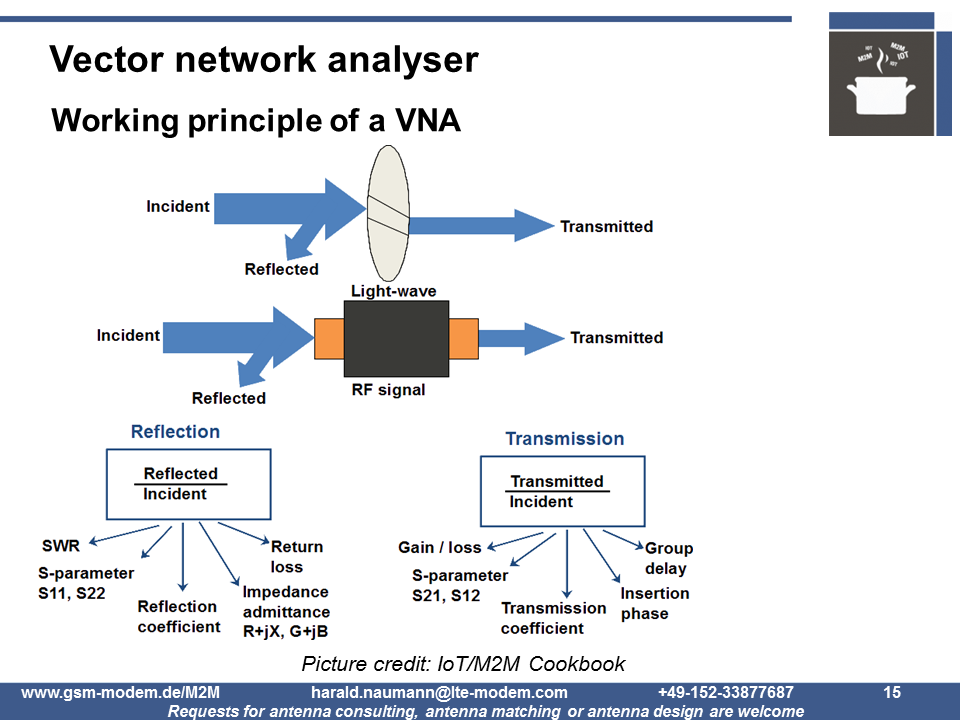To explain the principle of operation of a VNA, I use an optical lens for comparison. Light arriving at the lens is partly reflected. However, a large part of the light is directed through it. The part of the light that is reflected and the part that is transmitted can be measured.
A VNA measures the part of electrical energy that is reflected and the part that is passed through and exits again when measuring a four-pole (e.g. filter). When measuring antennas, only the part of the electrical energy that is reflected is measured. The goal is to have less reflection in the required frequency range. Antennas are converters and convert electrical energy into an electromagnetic wave. However, the VNA can only measure two poles of the four-pole. To measure the radiated power, you need a different measuring system. The non-reflected energy will hopefully be radiated. However, the reflected energy is certainly not radiated, but returns to the power amplifier of the radio module where it forms maybe a frequency conversion product. The frequency conversion product are then returned to the antenna and radiated there as a harmonic wave. In band 8 (GSM 900, NB-IoT, LTE-M) this is extremely critical because band 3 (GSM 1800, LTE-M 1800) is exactly resonant for the harmonic wave. But LoRa, Weightless and Sigfox are similar. If you choose antennas that are only resonant in the 900 MHz range, a possible harmonic wave will not be emitted. Therefore you should avoid multiband antennas for LoRa, Weightless and Sigfox.
Has this article series piqued your interest? Do you plan your own LPWAN IoT device? Do you plan to deploy IoT devices with embedded antennas? Do you have an IoT prototype and need to optimise the design or minimise the price? If you have answered “YES” to any one of these questions then please do not hesitate to drop an email to harald.naumann (at) lte-modem.com and to ask for a proposal or some engineering services to make your IoT idea a cost-effective reality.
